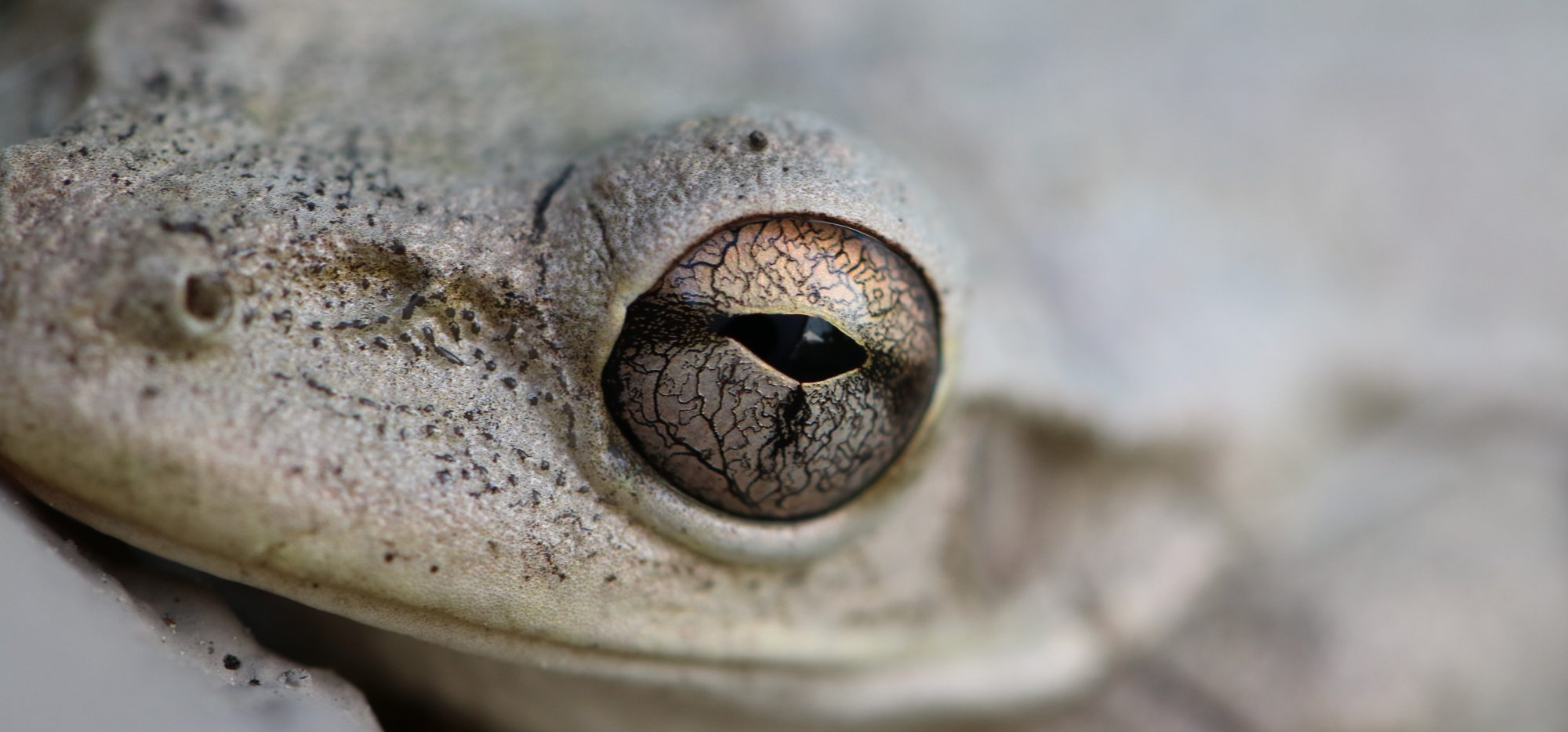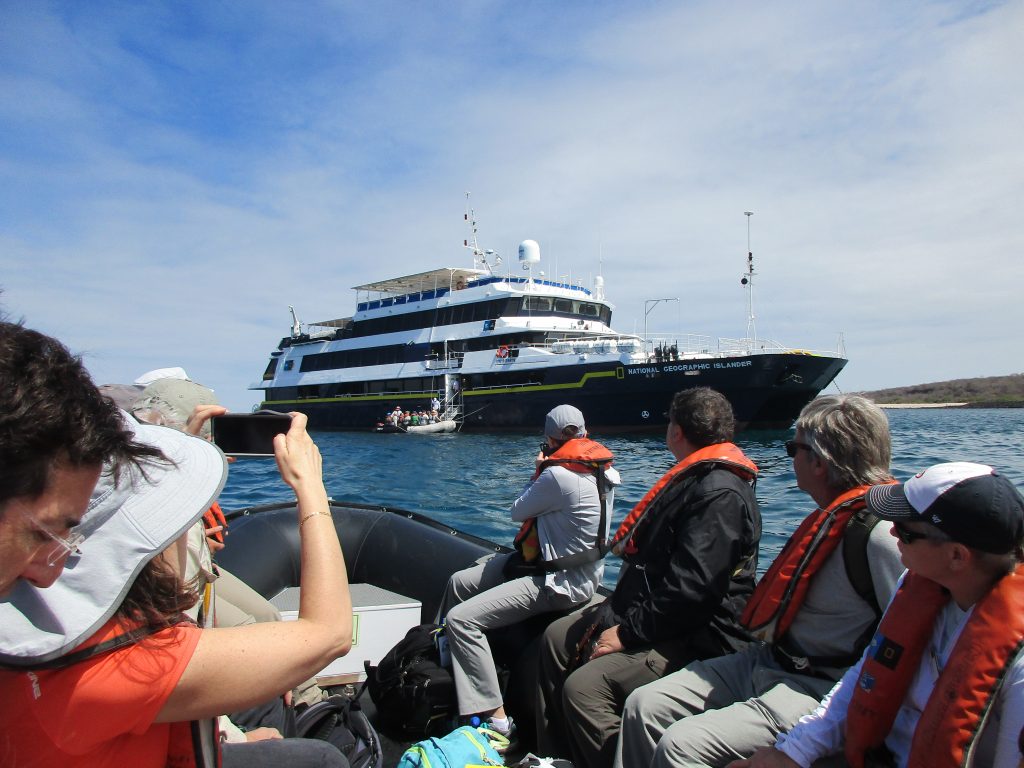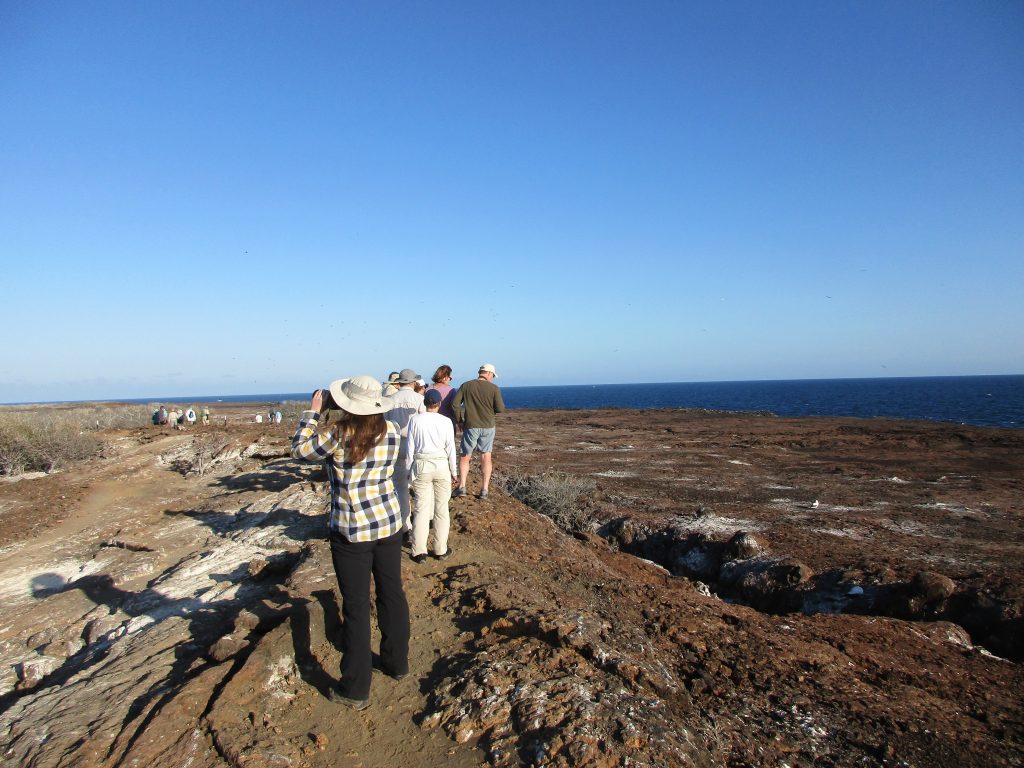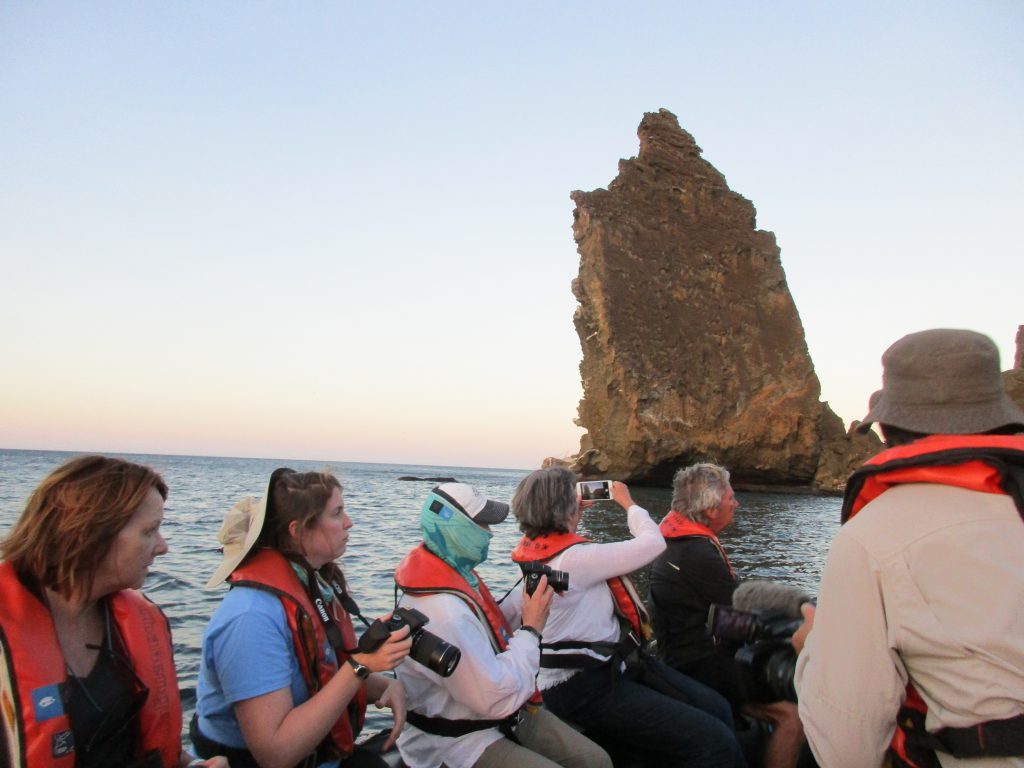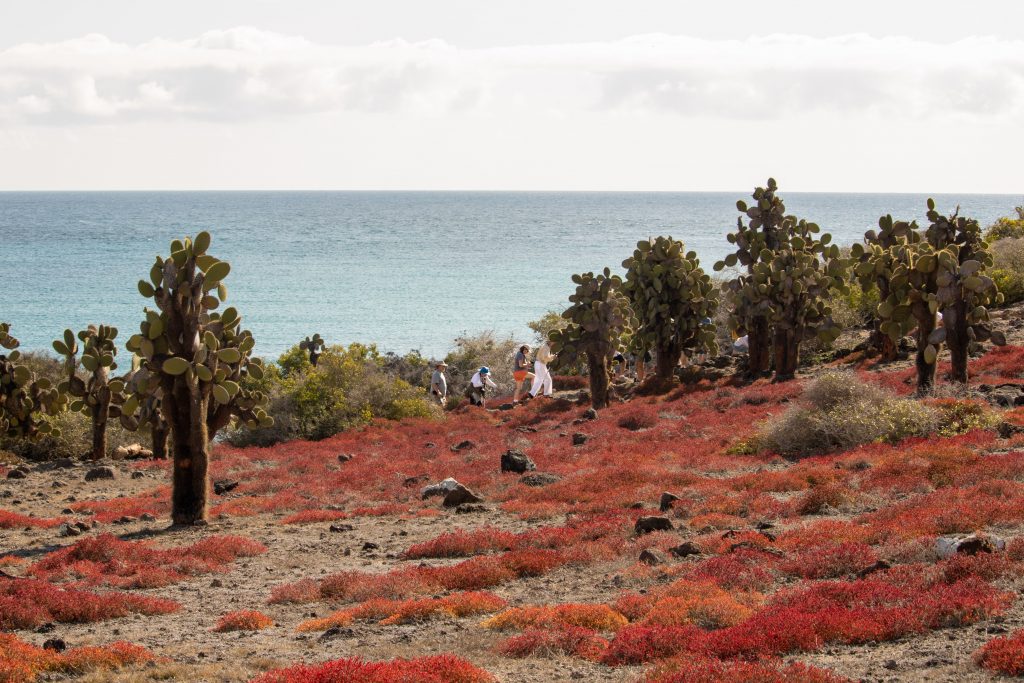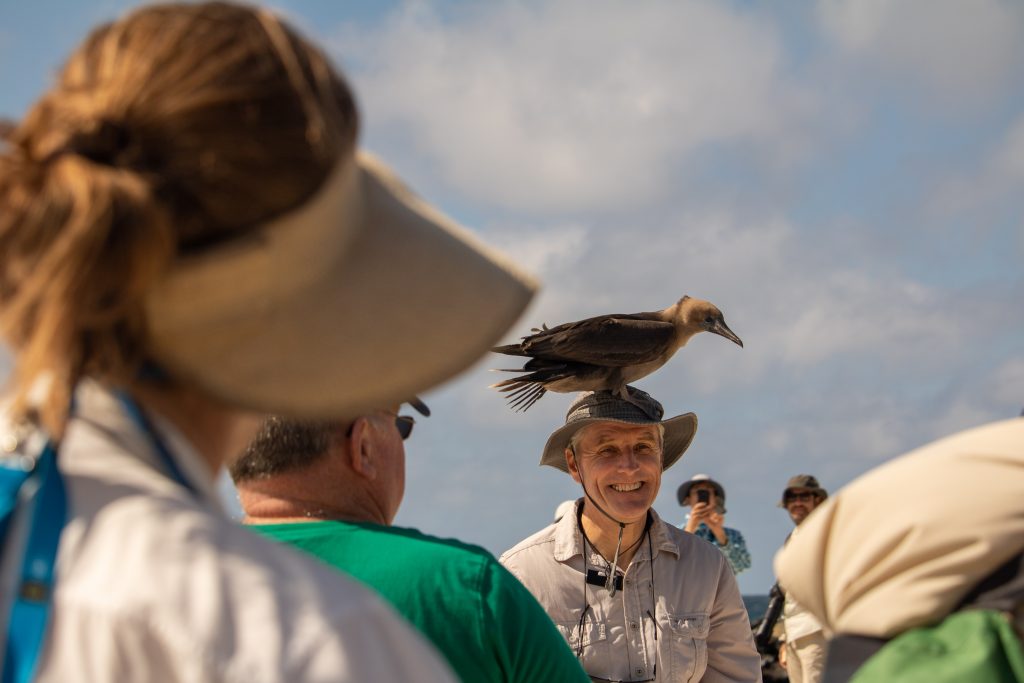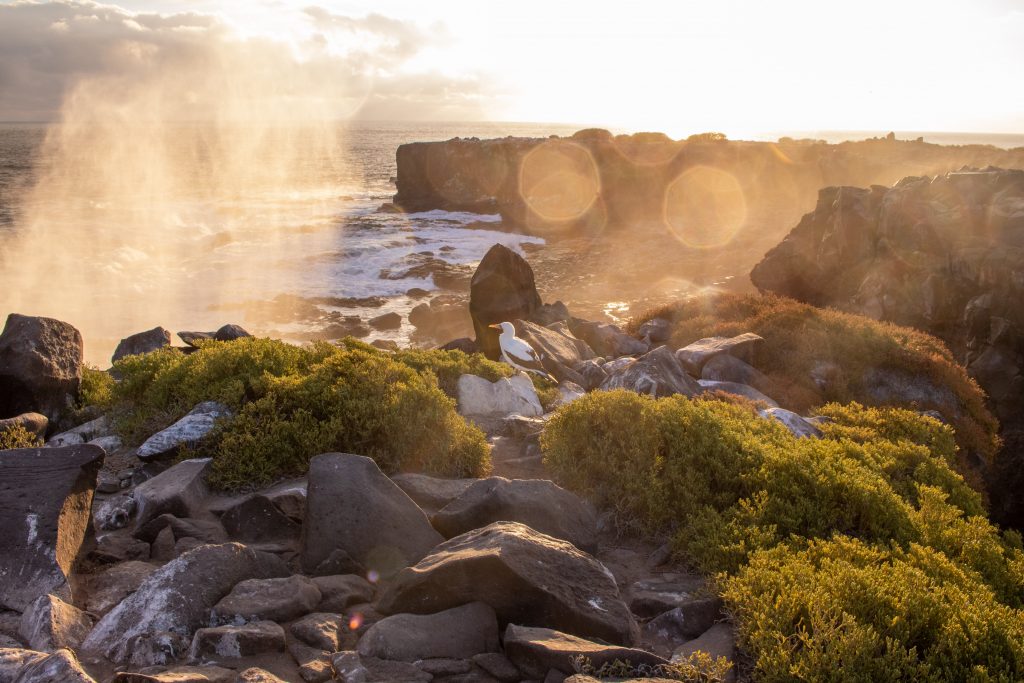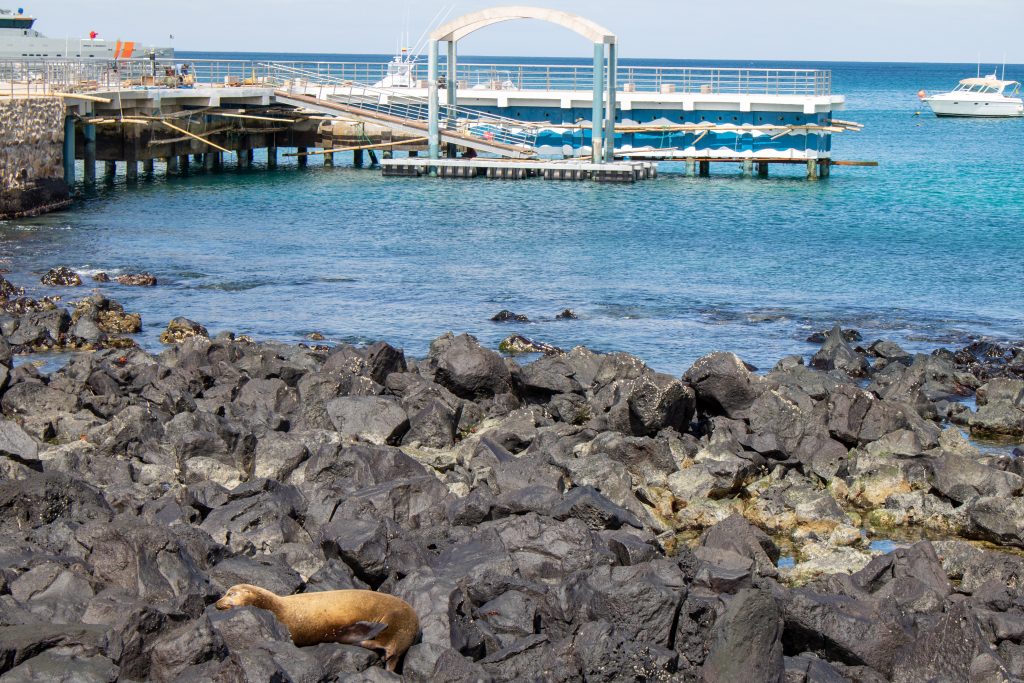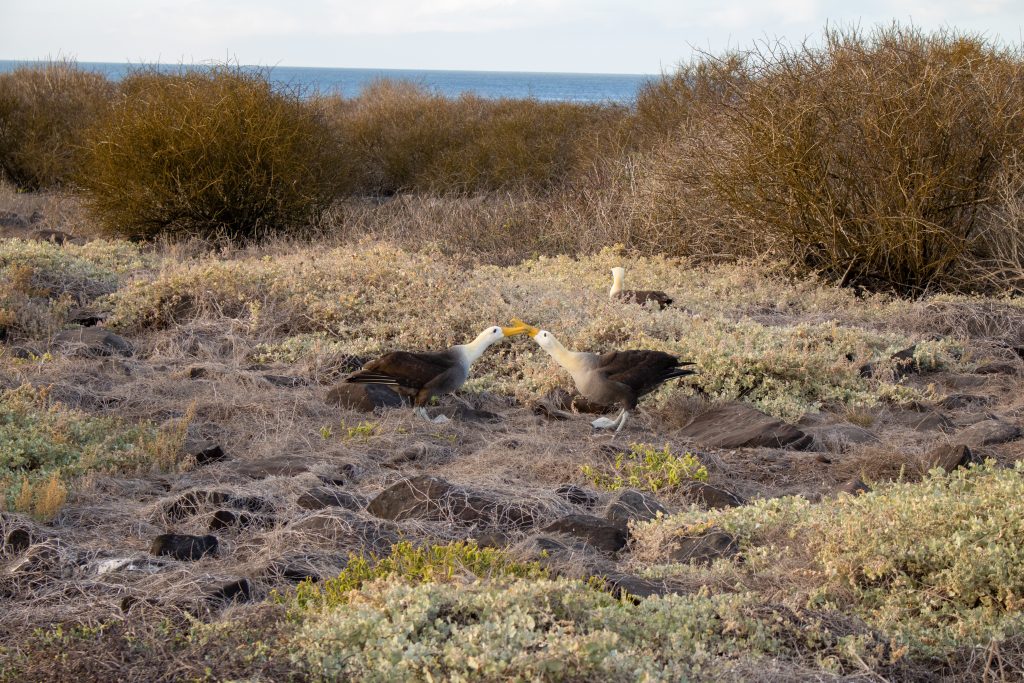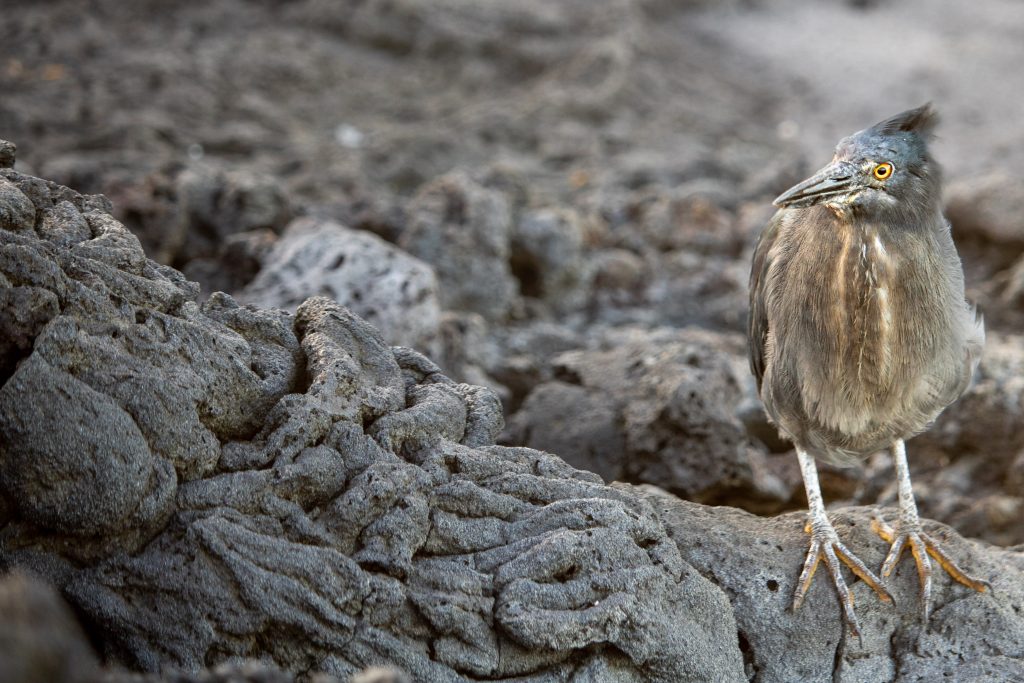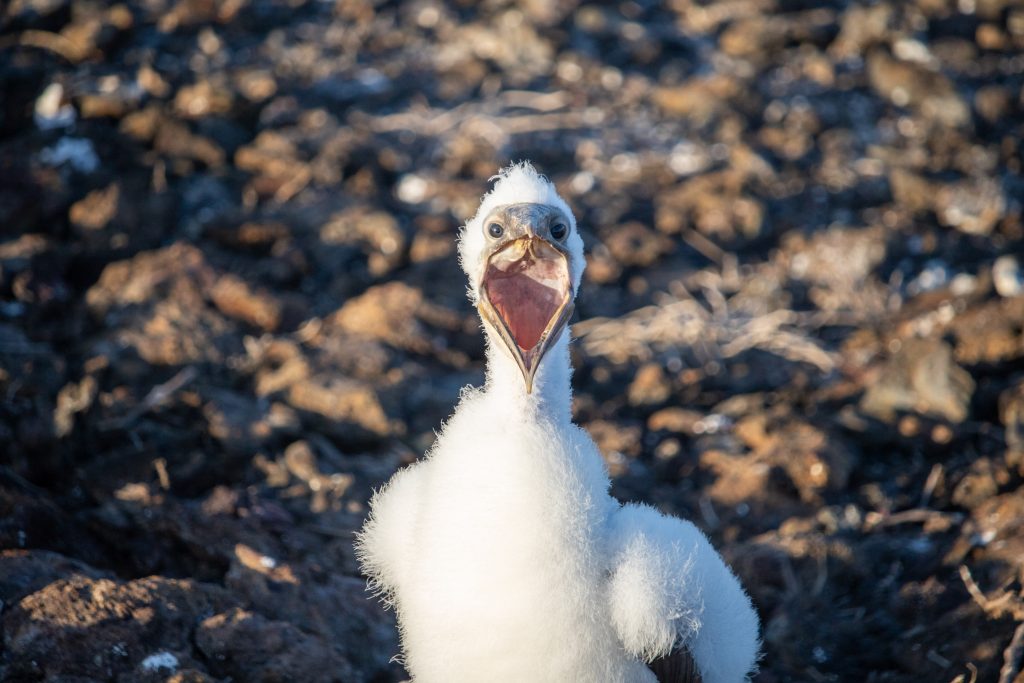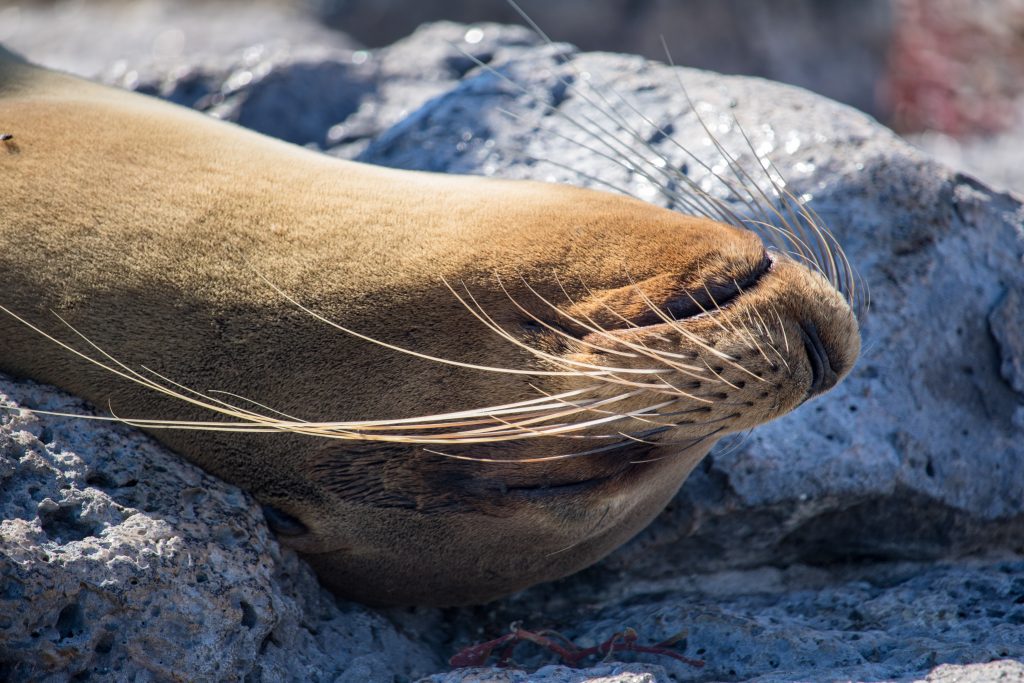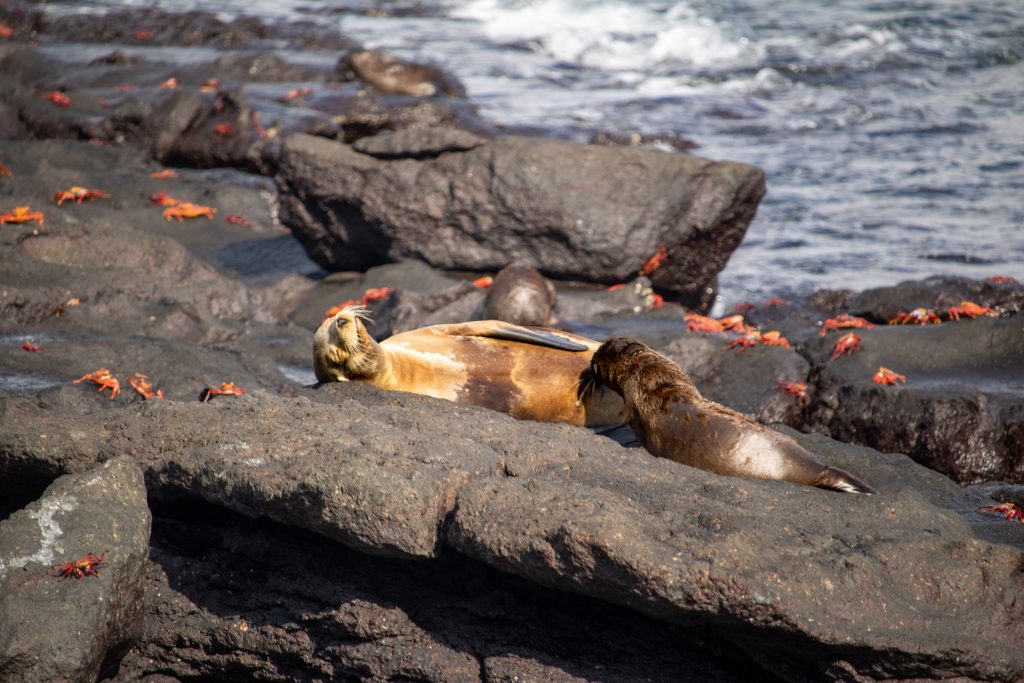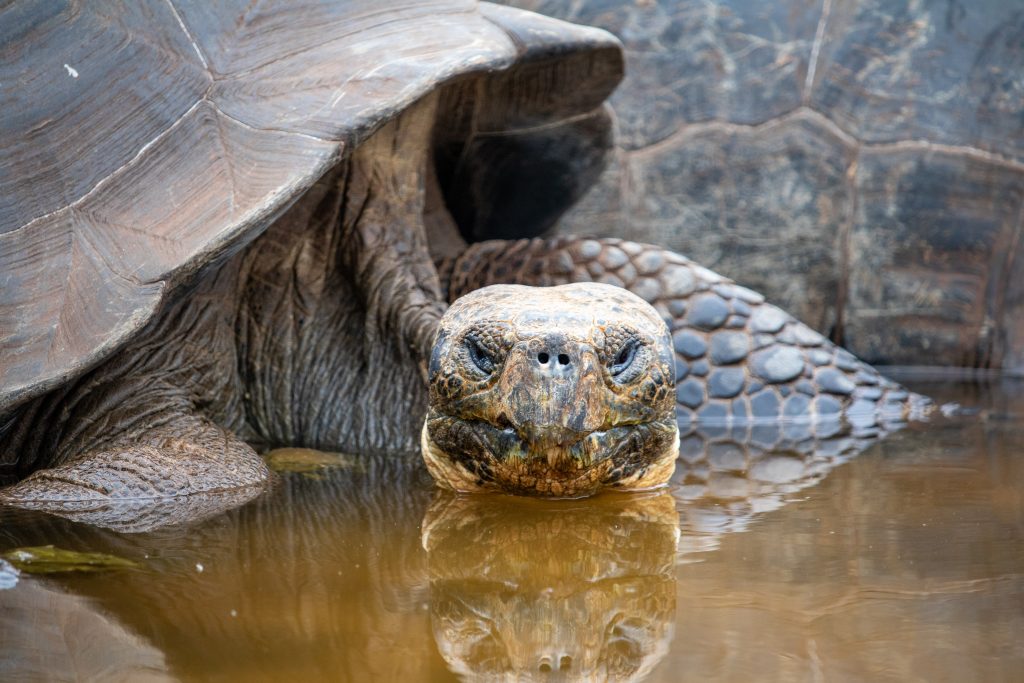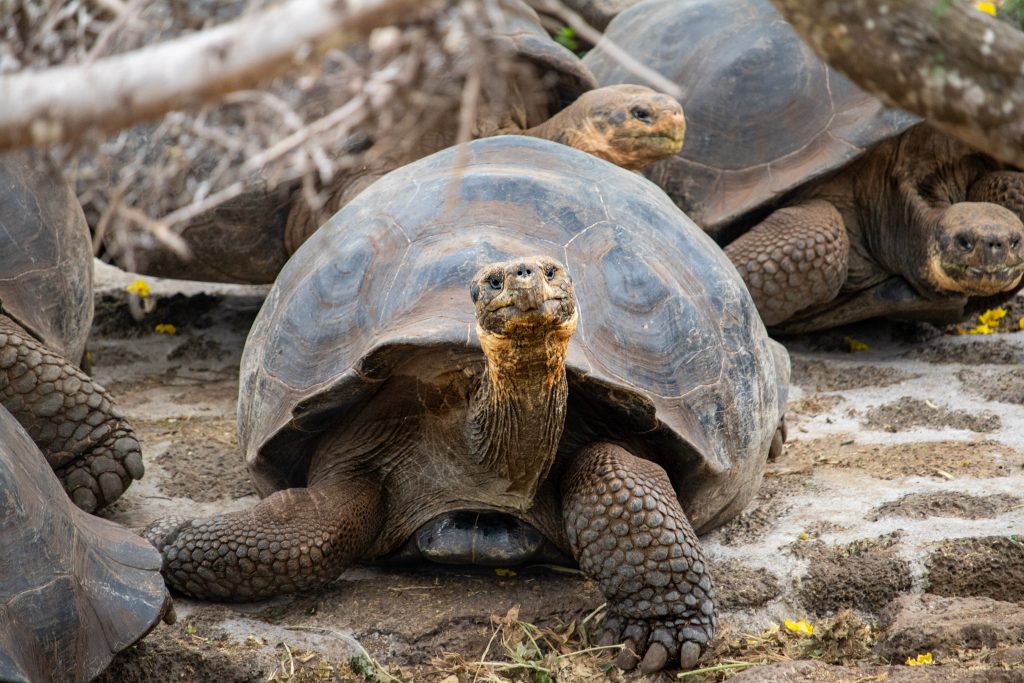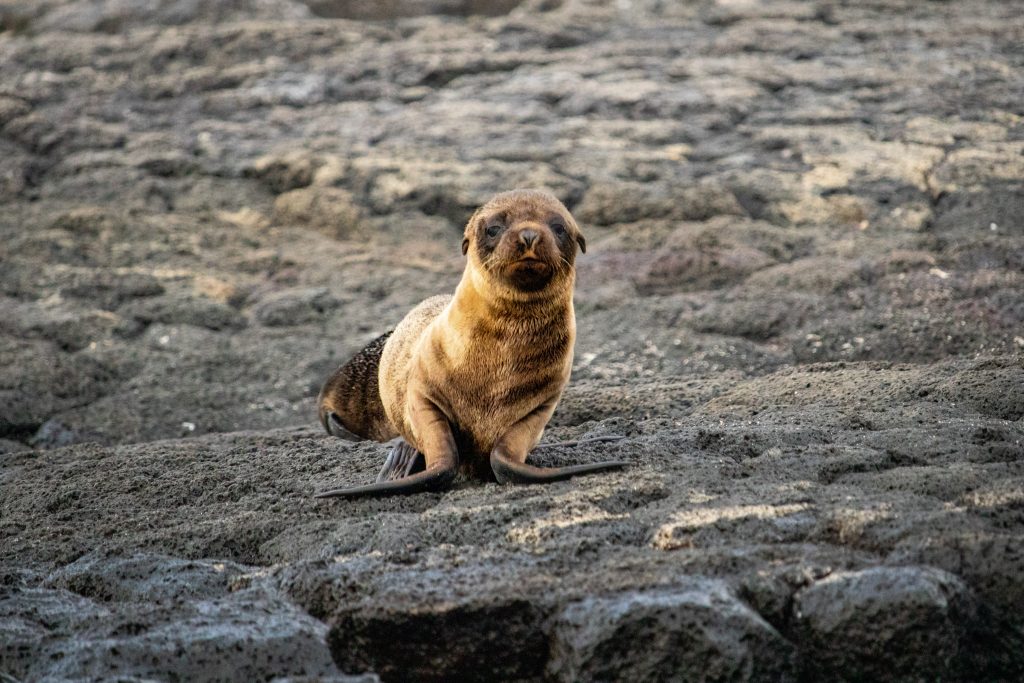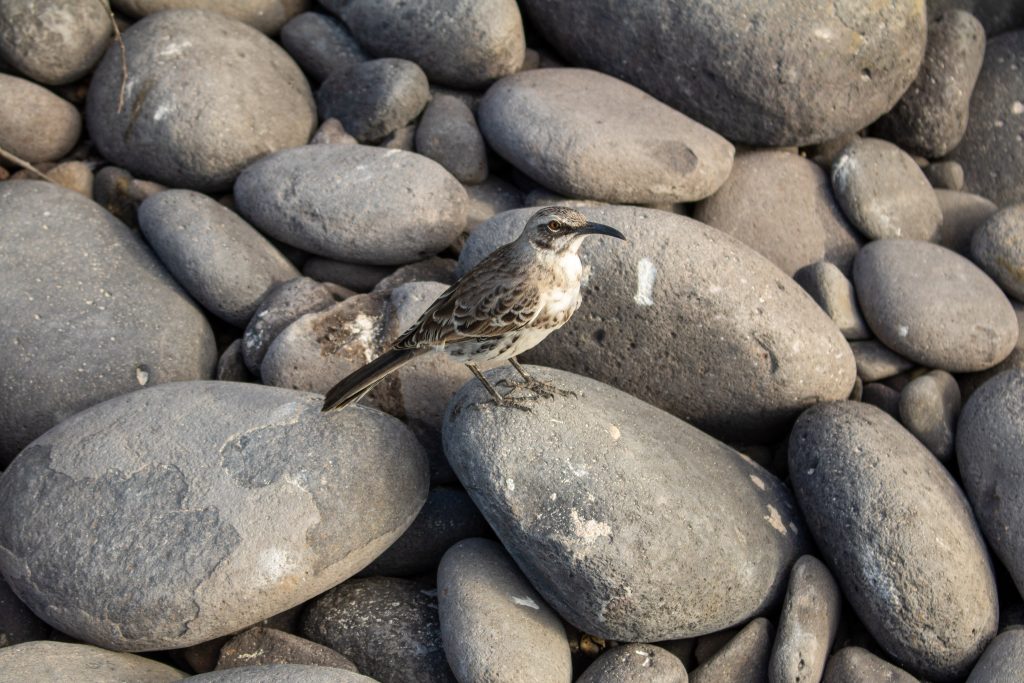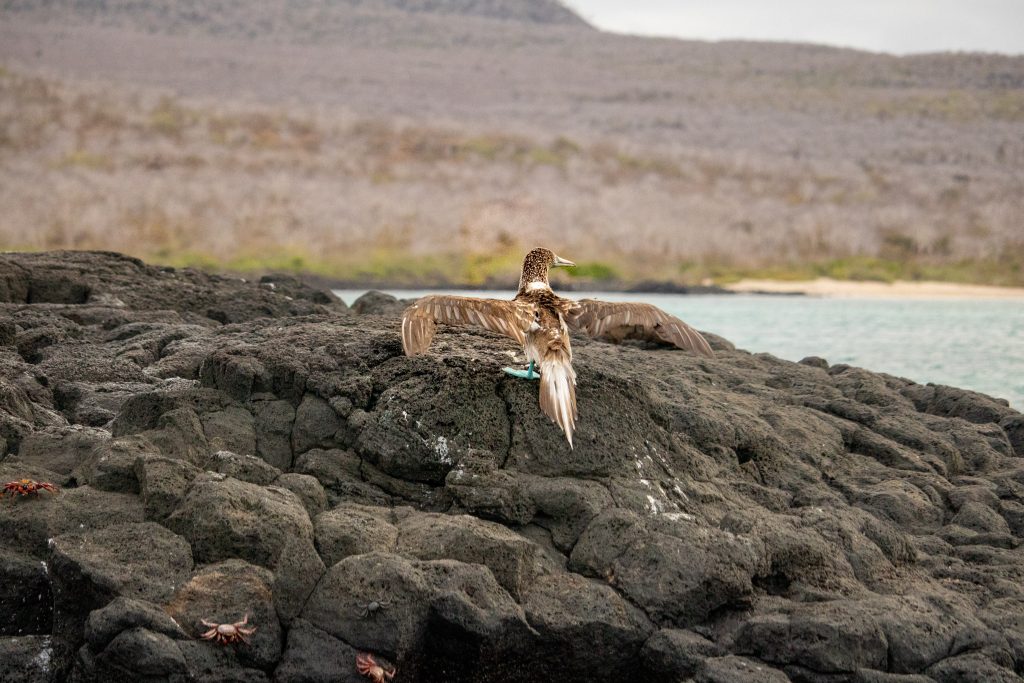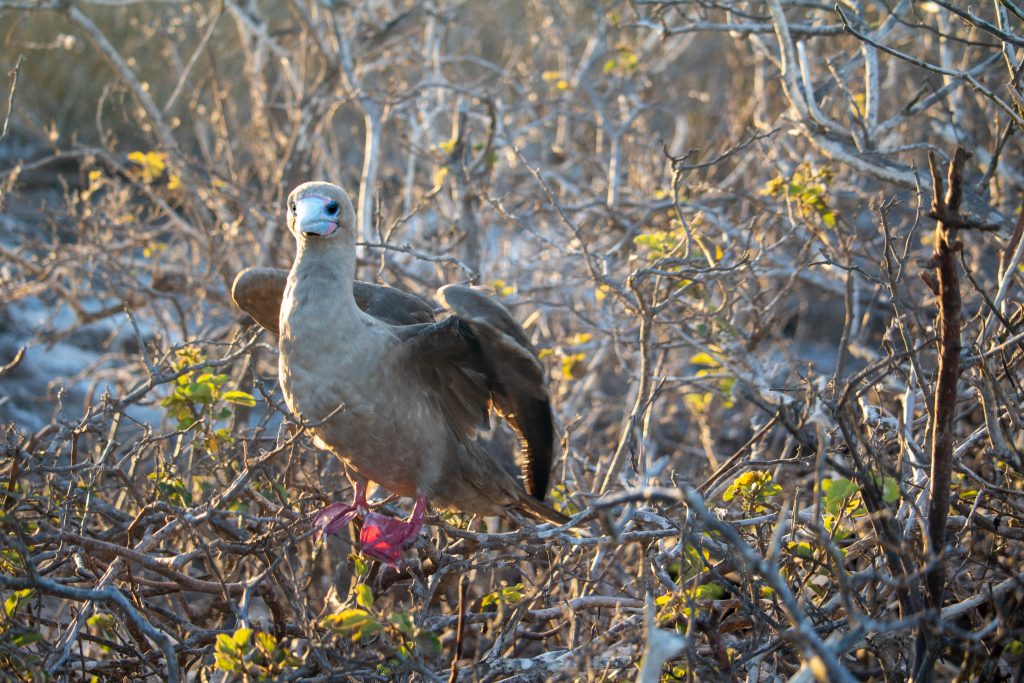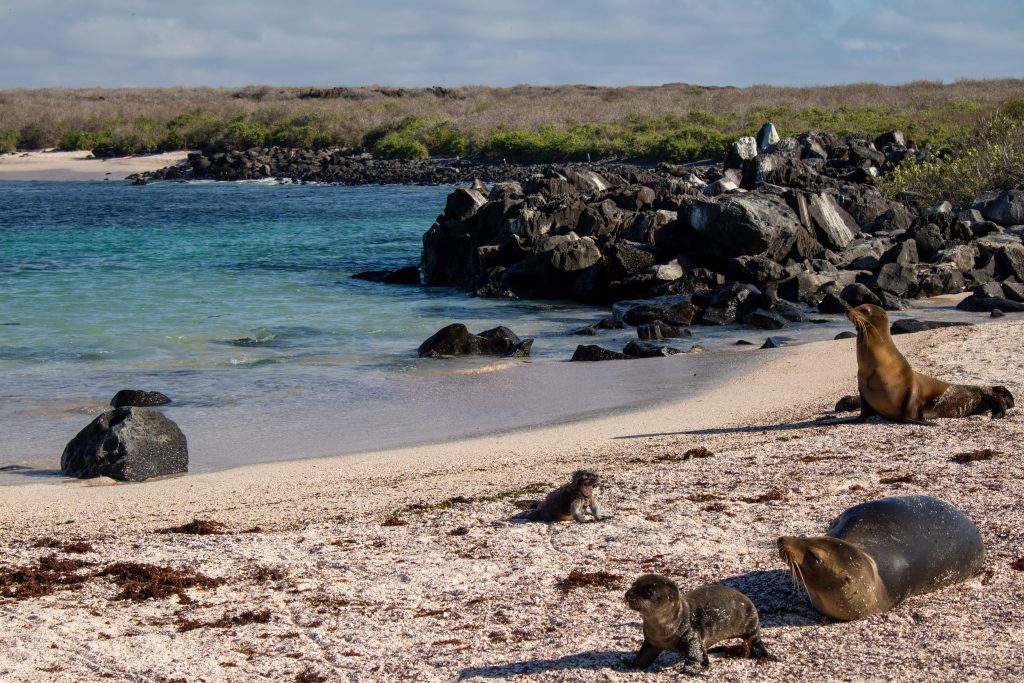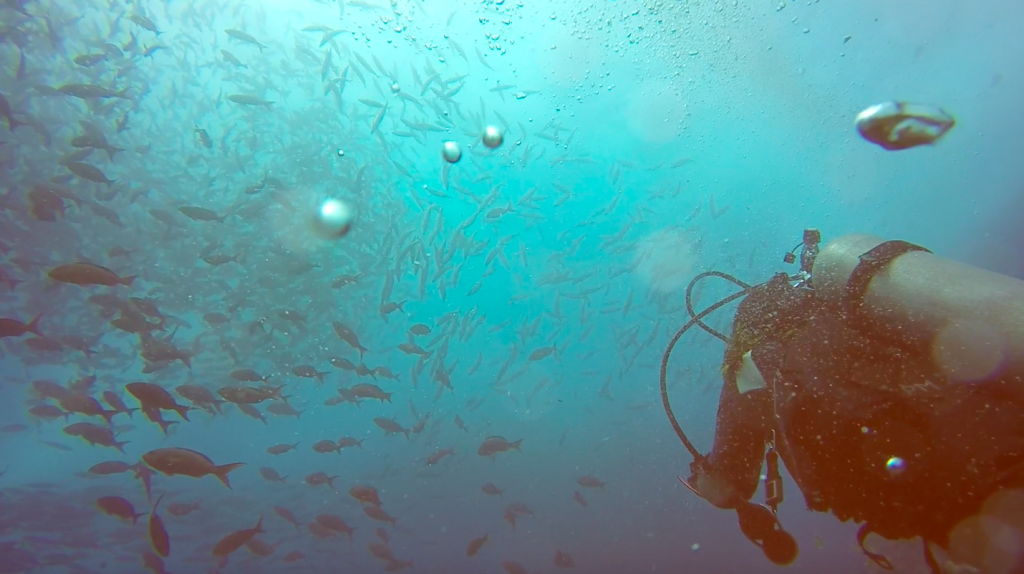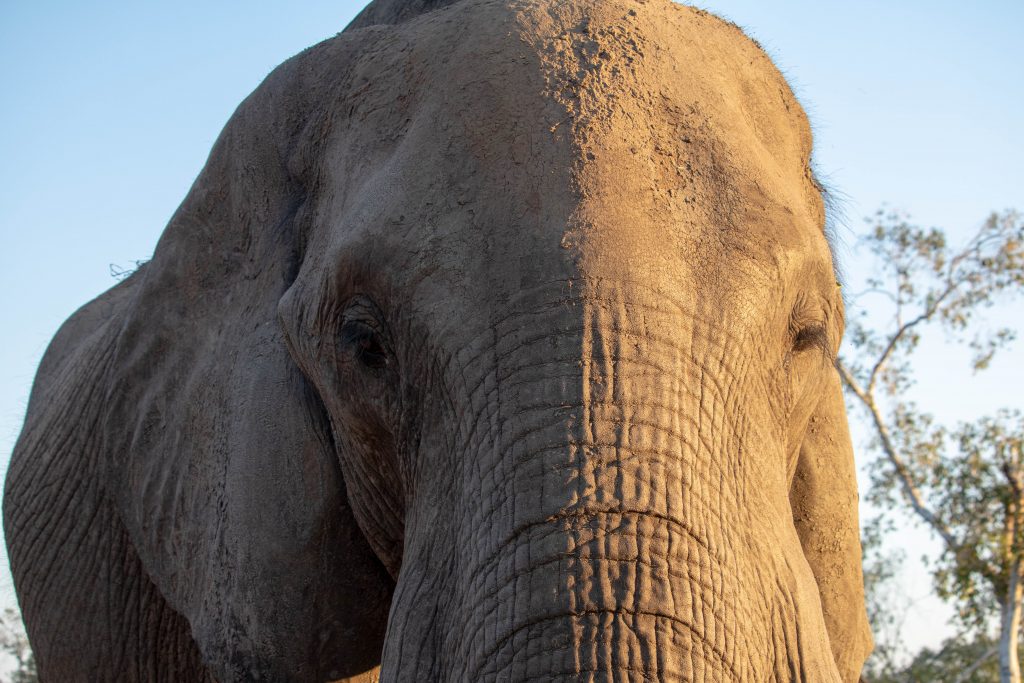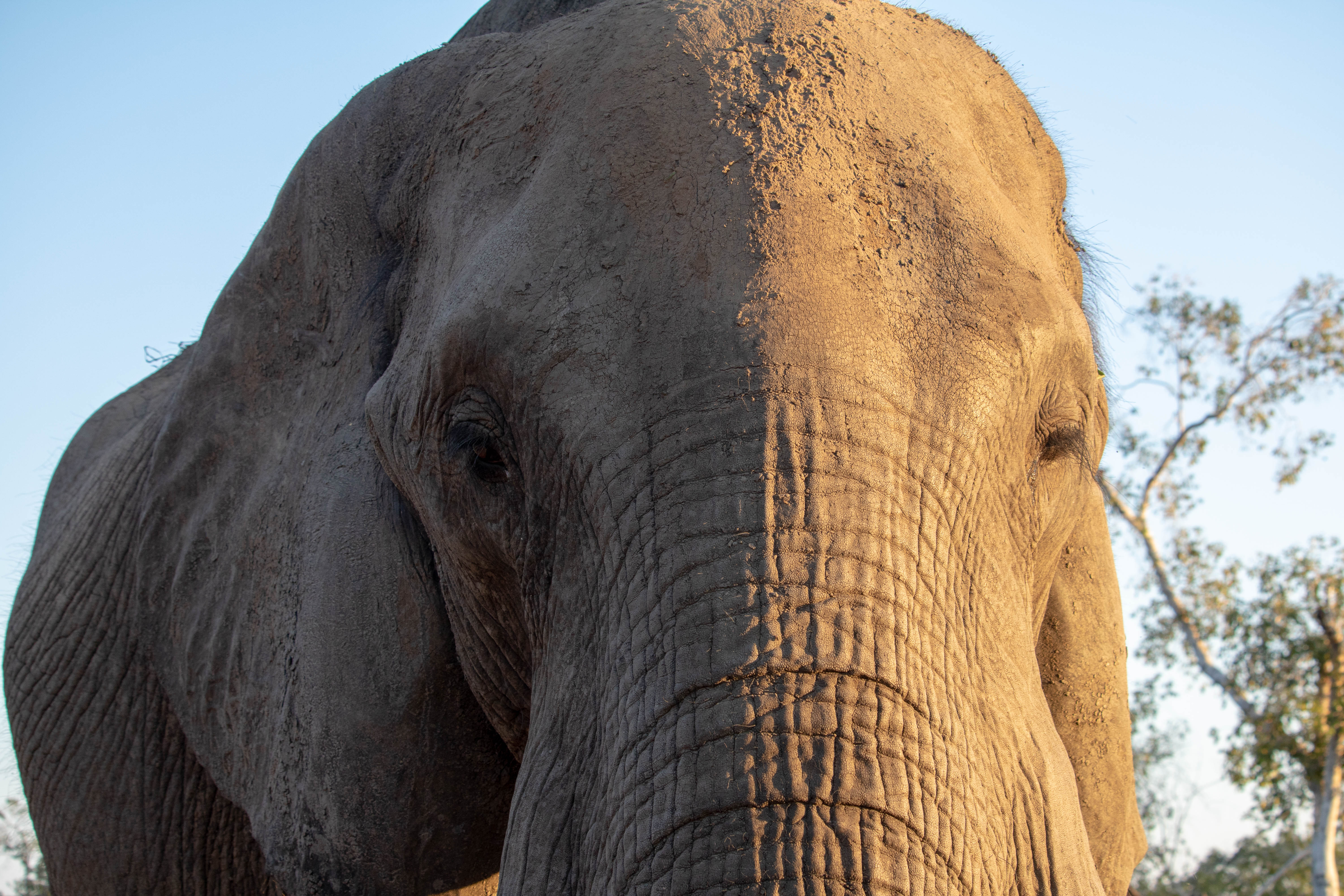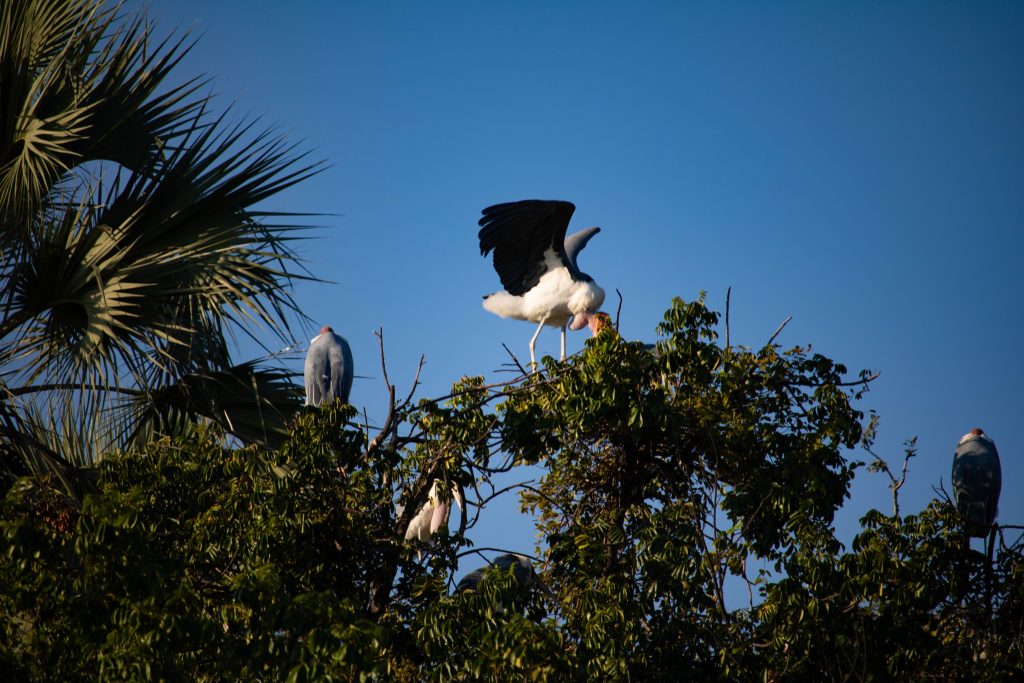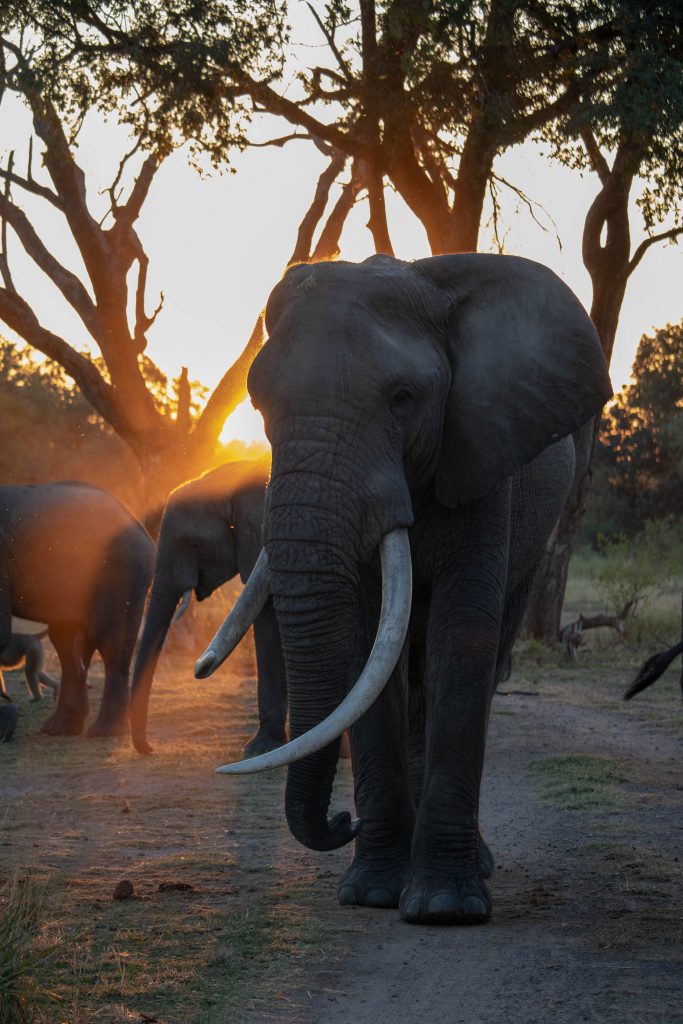2017 was a big year. I graduated from grad school (Go Bulls!), held down two internships, got married, and TRAVELED TO THE GALÁPAGOS on honeymoon. What. a. whirlwind.
I say “I”, but of course the marriage and honeymoon was actually a “we” thing, and boy oh boy did WE have fun in The Galápagos! We started the trip with a flight to Guayaquil, Ecuador where we crashed for the night before meeting up with our National Geographic/Lindblad Expeditions tour group the next morning. After a quick flight from Guayaquil to The Galápagos Islands, we were in one of the most picturesque places in the world.
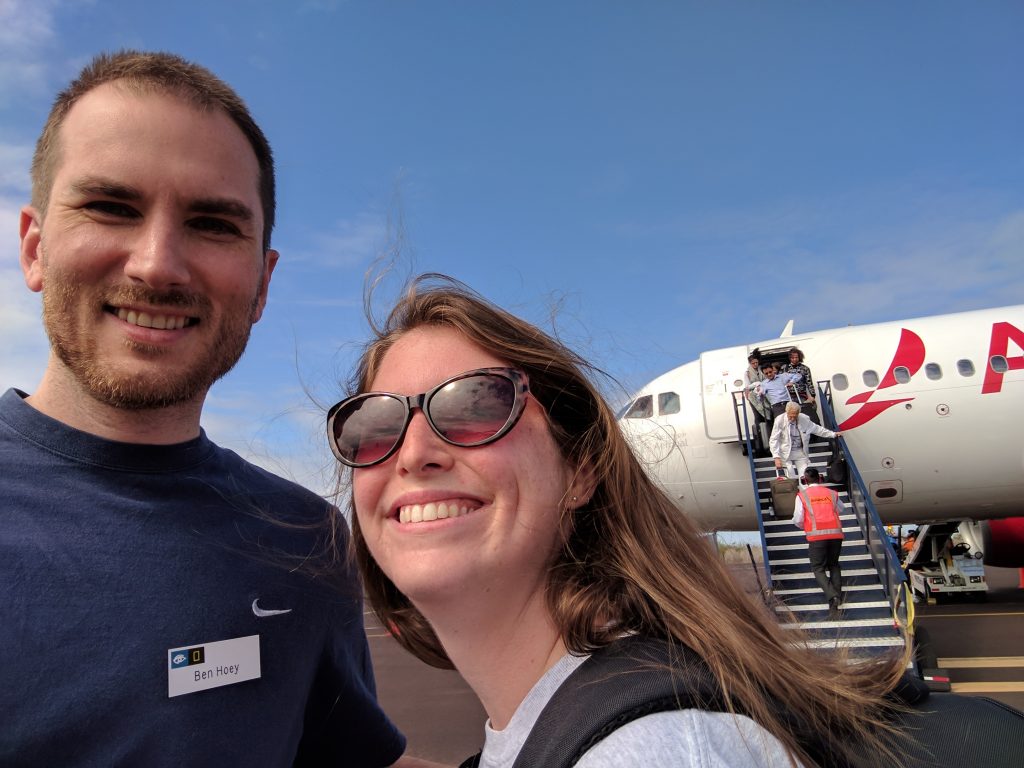
Get on Board!
We were quickly whisked away to the National Geographic Islander, the boat that we would call home and provide transportation overnight as we went island hopping for one incredible week.
We visited the islands of: San Cristobol, Española, Floreana, Santa Cruz, South Plaza, Santiago, Genovesa, and Baltra. Each one of them had its own special characteristics that made them unique.
Like most visitors to the Galápagos, I was VERY interested in getting as many photos as possible of the wildlife. From the sea lions, to the boobies, to the marine iguanas…I wanted to see it ALL! And in fact, we did! Even flamingos! (The one animal we didn’t see that was on my list was the flightless cormorant, but that’s because we didn’t visit the islands they are endemic to.)
Back on Land
But wildlife wasn’t the ONLY thing to see in the Galápagos! We visited a coffee farm, “Post Office Point”, and a local school. We also walked through a lava tunnel!
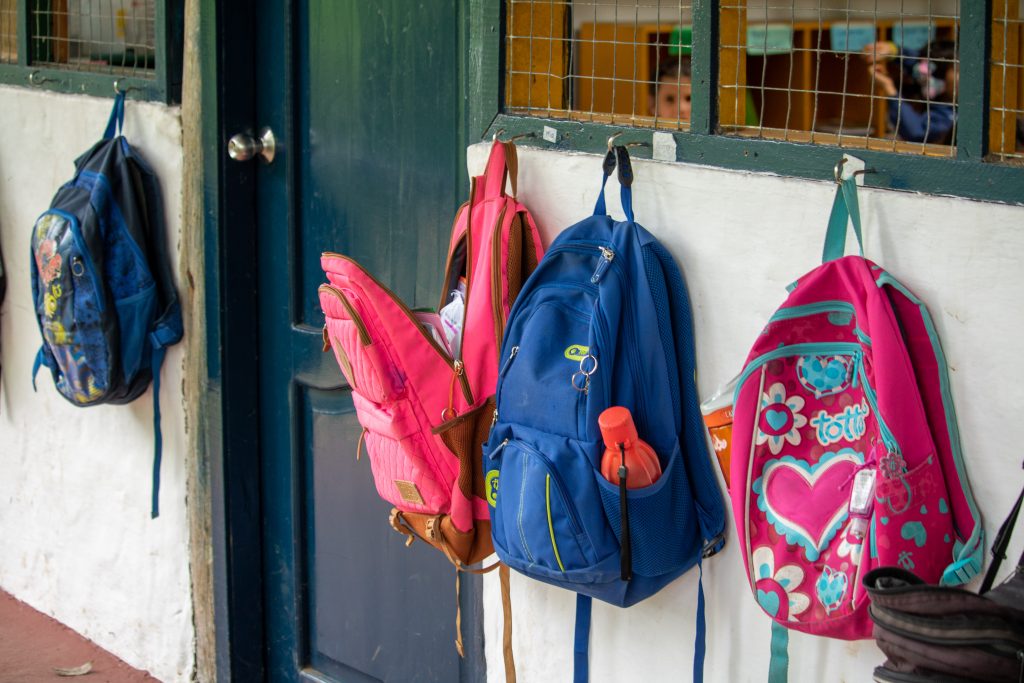
Local school backpacks 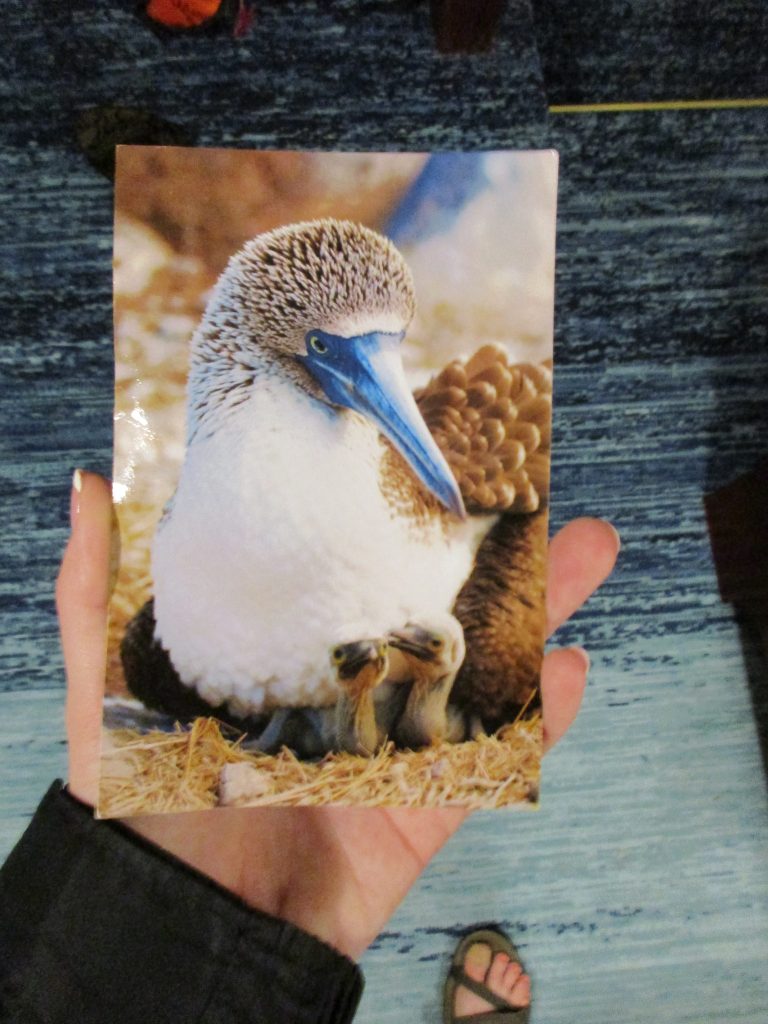
Post Office Point 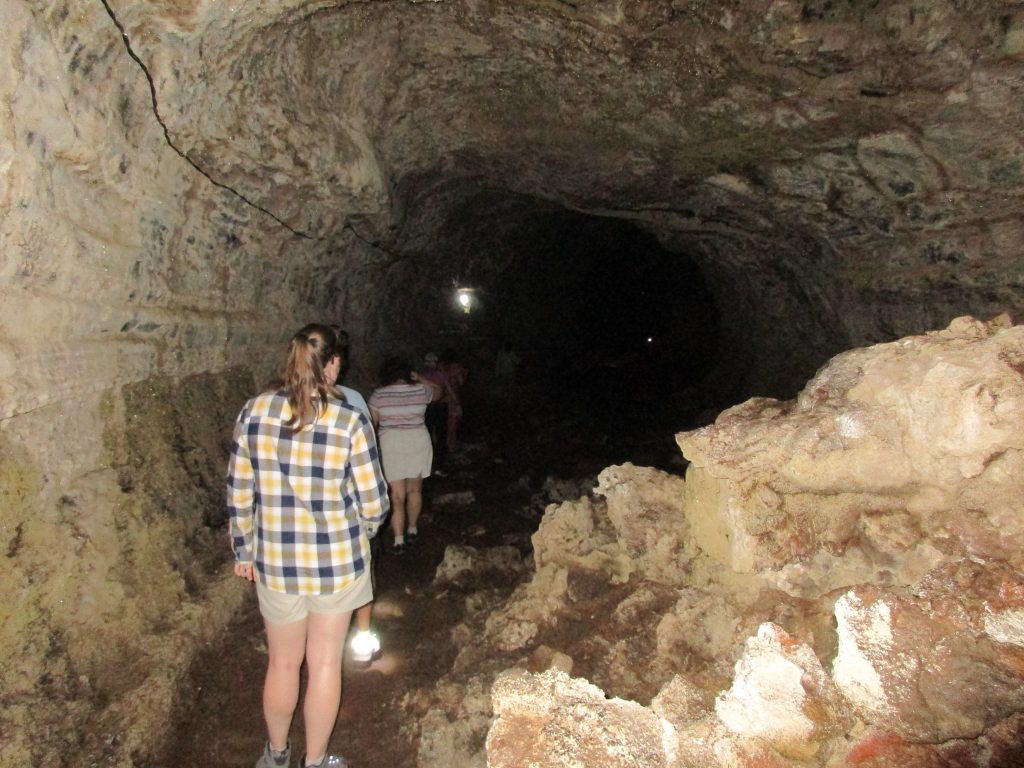
Lava tunnel walk 
Making friends with Pepe the donkey at the coffee farm
After all of the incredible experiences on the National Geographic Islander, we decided to stay a few extra days on Santa Cruz in the city of Puerto Ayora.
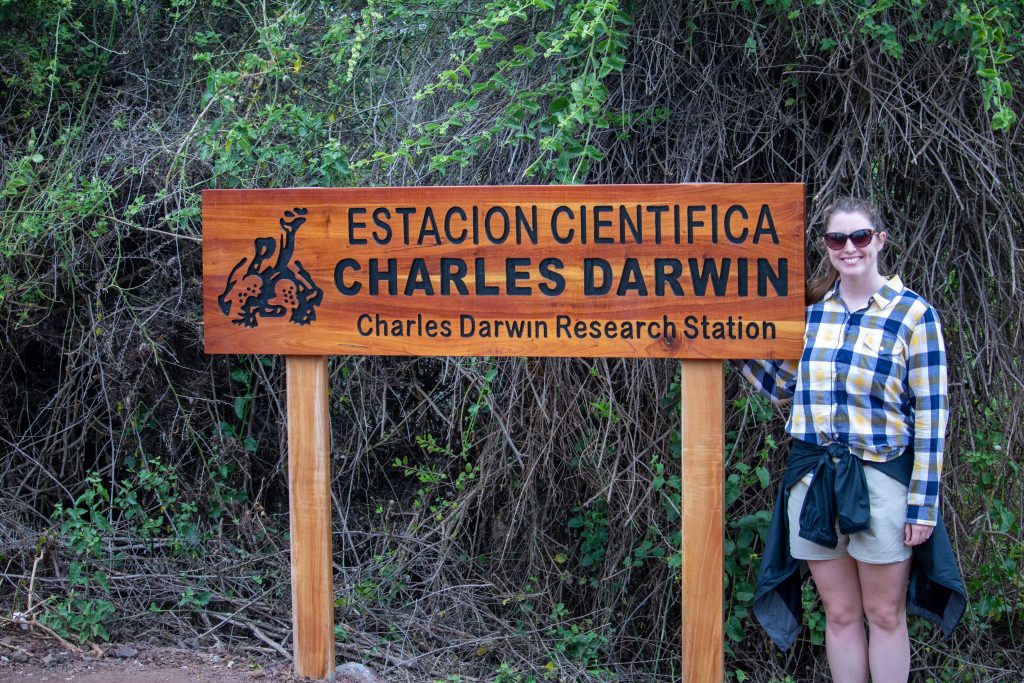
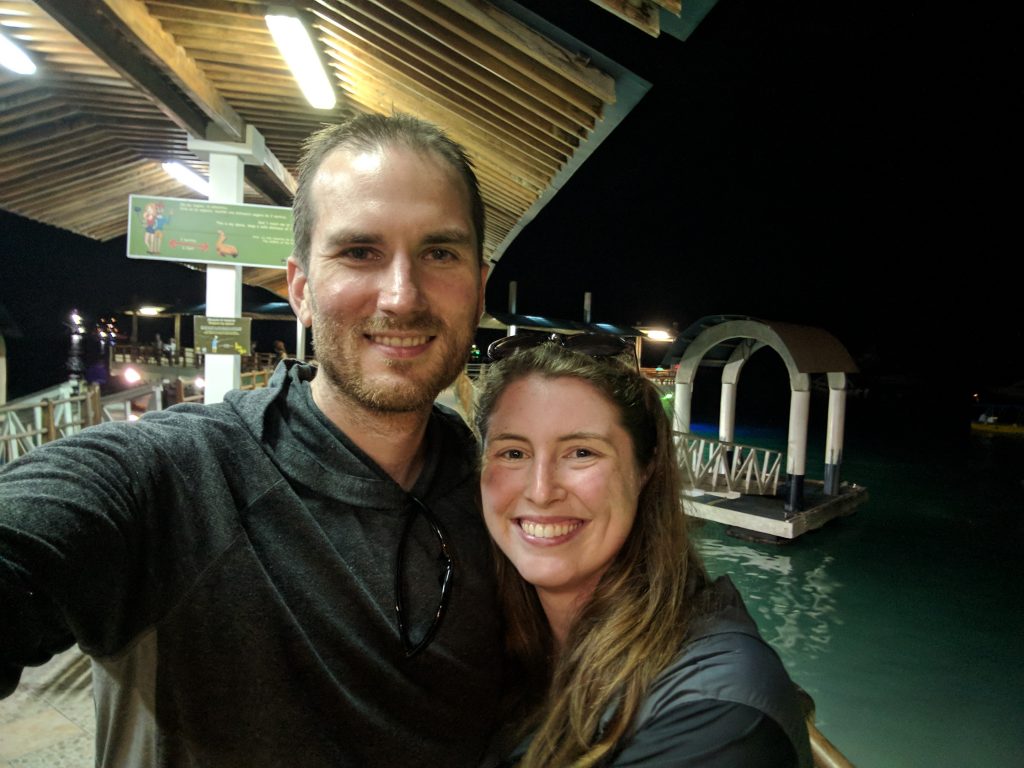
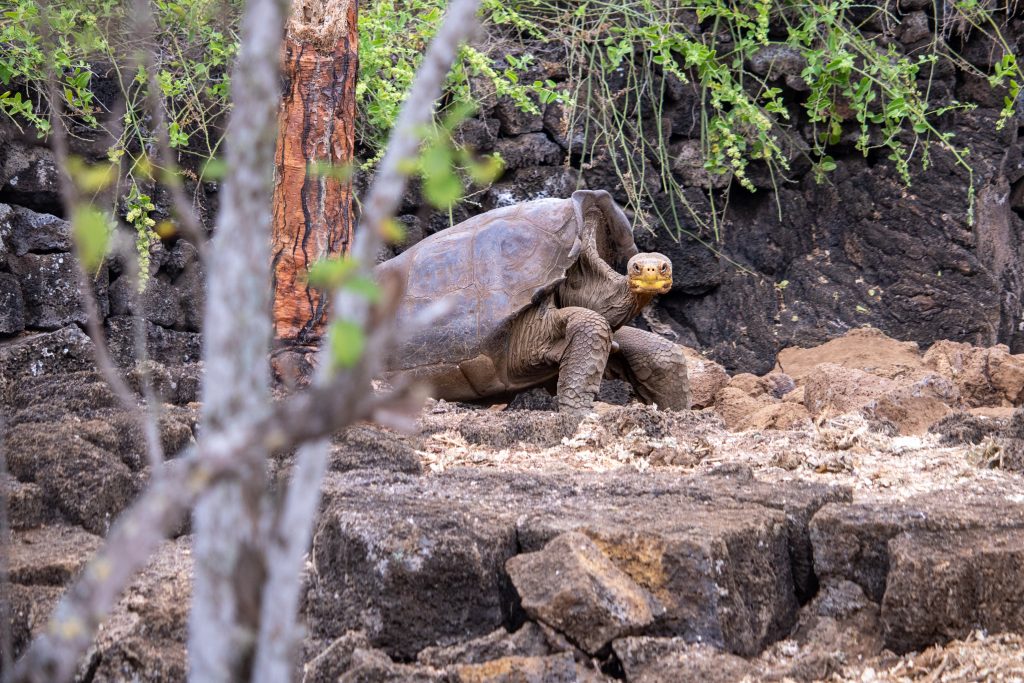

Street shot of Puerto Ayora on Santa Cruz
Dive, Dive, Dive
These extra days on Santa Cruz were so we could go DIVING! Where better to dive than the Galápagos, I ask you?!
We went diving with SCUBA Iguana at Gordon Rocks in hopes of finding hammerhead sharks! While we didn’t see any hammerheads, we DID have the most incredible dives. There is nothing that can compare with the feeling of being surrounded by what feels like a wall of fish.
After a day of off-gassing on the island, re-visiting the Charles Darwin Research Station for the—oh, I don’t know—millionth? time, we packed up our gear and started the journey back home.
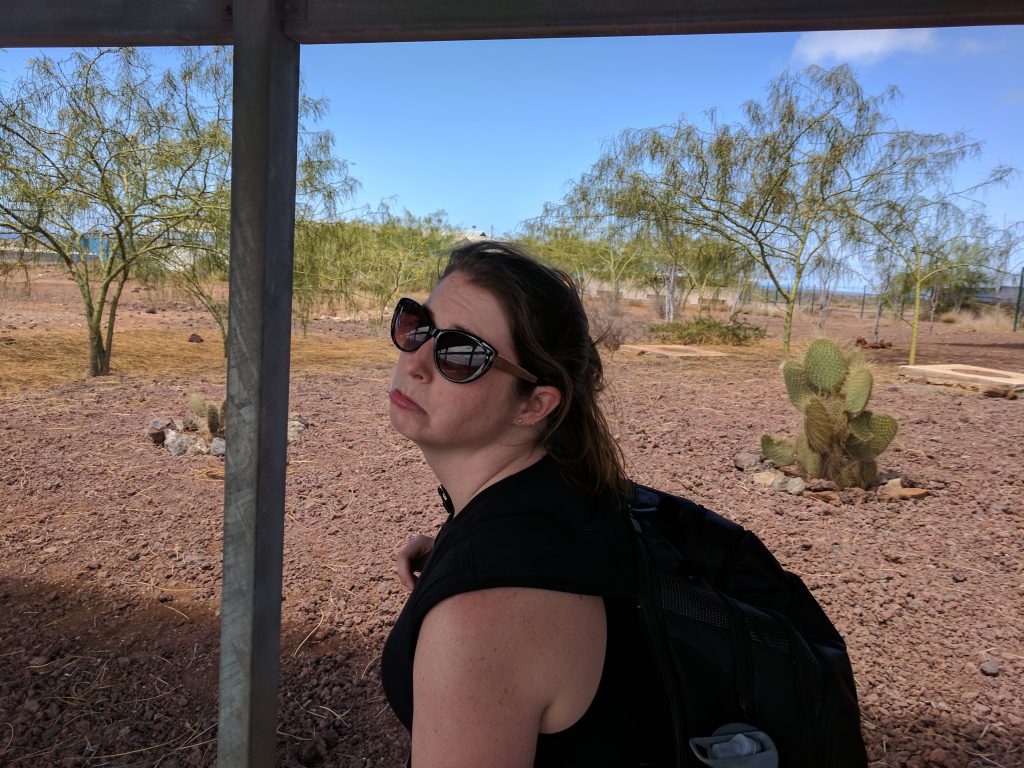
“I don’t want to leave!” 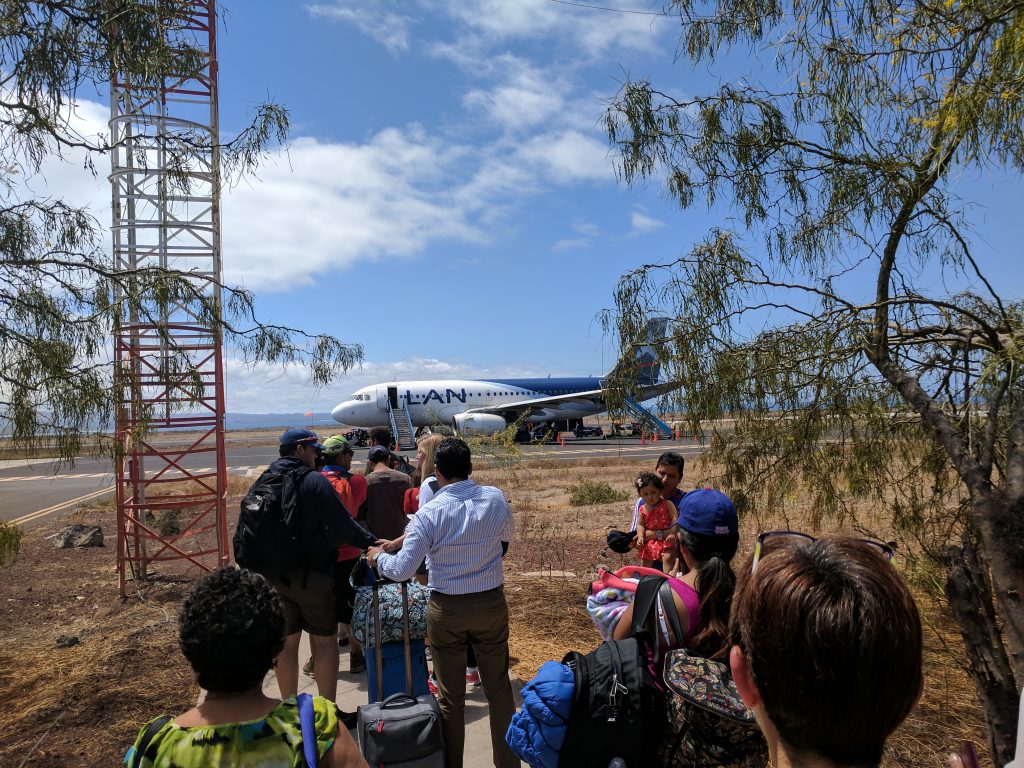
Walking to the plane to take us
back to mainland Ecuador
Time to go Home
Eventually we made our way back to the States. This trip to the Galápagos was one of those that takes your brain a few days to register, but provides a lifetime full of memories. From the barking sound of the sea lions, to the tenacity of the boobies, to the immersive underwater world, I can honestly say that our lives were changed by this trip—in the best possible way.

If you’re looking for more dive stories, be sure to check out this post about the Great Barrier Reef and our trip with Spirit of Freedom.
